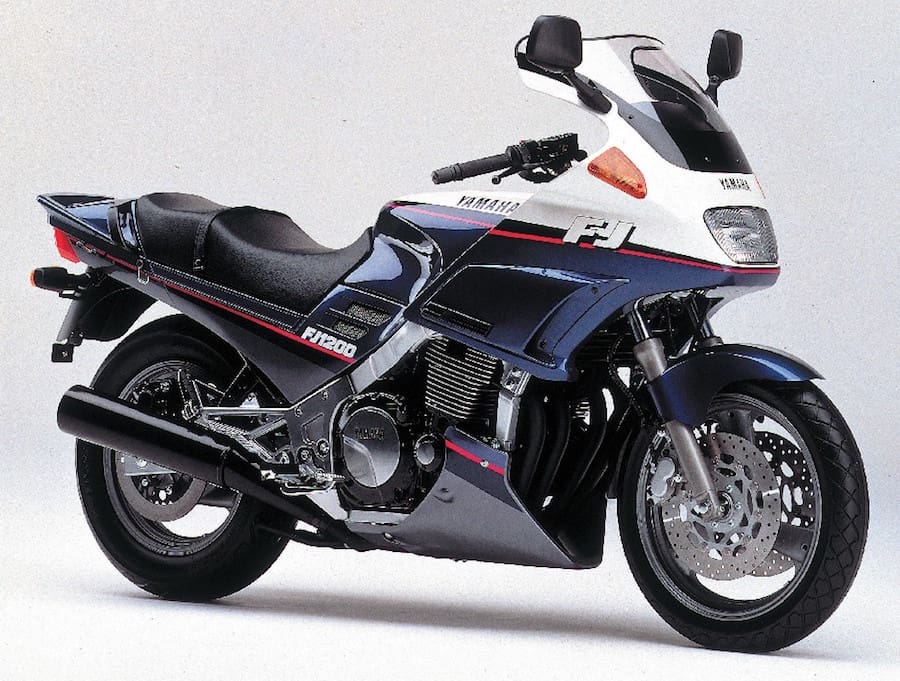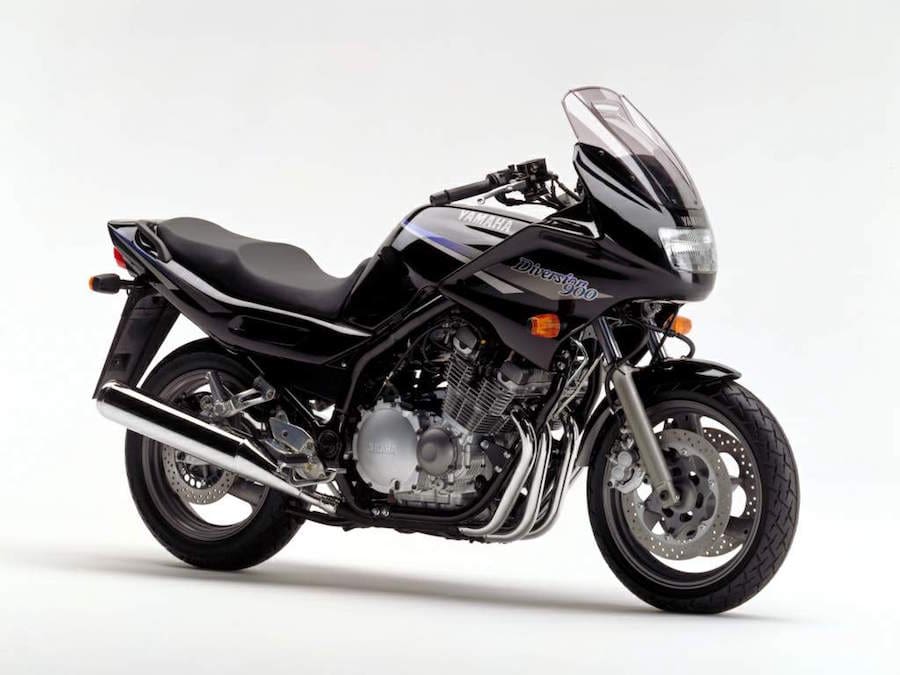Some call it the thinking man’s sportsbike, others call it a bitumen burner. We call it the Yamaha FJR1300
The first touring motorcycle to add a shot of adrenaline to the process of doggedly chasing the distant horizon was probably the BMW R100RS. Its 160km/h-all-day ability and top whack of around 200km/h added new zest to motorcycle touring. A generation later the ‘sports-touring’ category was well established, and Yamaha’s first FJR1300 arguably landed on the top rung of its competitive ladder.
Sports-tourers like the FJR attract rusted-on supporters for good reason. Super-comfortable for long days in the saddle, they’re also up for a bit of action wherever the highway winds through the mountains or around the coast. Perhaps surprisingly, they also turn out to be good commuters, taking urban traffic challenges in their stride.
The FJR Yammie’s claim to fame is its pairing of a stonking big-bore engine with a high-performance chassis. The 1298cc fuel-injected in-line four produces 108kW, backed up by shedloads of grunt. A sweet-shifting five-speed gearbox and a reliable and unobtrusive shaft drive complete the impressive drivetrain. It’s all accommodated in a stiff aluminium twin-spar frame riding on a 48mm fork and a rear shock with handy lever-operated pre-load adjustment.
Braking has always been an FJR strong point. From 2006 onwards all FJRs (thereafter labelled FJR1300A) have come with ABS and partial front-rear linking as standard, a system that’s well suited to a big tourer.
Also standard are lockable hard panniers. Despite holding a lot of gear, they don’t make the bike excessively wide, leaving you free to confidently sneak through traffic. Their luggage capacity combines well with the weather and wind protection provided by the touring fairing and screen to make the FJR an excellent long-haul steed.

- Fairing shape was wind-tunnel developed for low drag and stability at 250km/h with rider, passenger and panniers
- Suspension parameters and frame geometry were established to suit spirited riding on European Alpine roads
- Engine design layout drew heavily on Yamaha’s experience with its R1 superbike powerplant
- Screen height, electrically adjustable over 105mm range, defaults to lowest setting
The screen’s height is electrically adjustable using a rocker switch on the handlebar. Also adjustable are handlebar position and seat height. These refinements add to the pleasure and comfort of the ride on a bike whose basic ergonomics accommodate a range of rider sizes. Passengers are similarly coddled.
Another change for 2006 was a fairing revision to reduce the amount of engine heat reaching the rider. A source of complaint from some pre-’06 owners, it had only affected me on hot days when stuck in city traffic.
In mid-2006 the $24,990 FJR1300AS joined the $22,999 FJR1300A model in Yamaha showrooms. The AS featured an electrically operated clutch (no clutch lever) and the choice of foot-lever or push-button gear changing. Heated grips became standard on all FJRs in 2007.
The big FJR – it has a 1545mm wheelbase and weighs 237kg dry – is very accessible thanks to its 805mm seat height, and the bike is surprisingly easy to handle in low-speed manoeuvres thanks to its fairly low-set mass.
The FJR1300 riding experience is rewarding for touring riders wanting some raw performance mixed in with comfort and versatility.
Given a fistful, the big engine transforms immediately from docile labrador to spirited rottweiler. I’m talking about the sound and feel as you unleash its power, producing savage acceleration, in any gear from any speed.
Handling is excellent. While the front end can feel a bit vague coming from a sportsbike, it’s entirely trustworthy, allowing you to pitch the big FJR into tight bends with gusto. Once you’ve committed, it holds a line well, preparing you for the happy moment where you blast through the apex, chasing the next bend.
The engine’s reasonably modest thirst in touring mode provides a safe highway range of more than 380km from the 25-litre tank.
This review covers the Gen I (2001-2005) and Gen II (2006-2012) FJR1300 models; the Gen III (2013-current) model is a much-revised motorcycle with many substantial changes to chassis, drivetrain, technology and styling.
The FJR1300 is a top-quality, high-performance machine, a real rider’s bike that is also reassuringly safe and reliable.
BUILDING BRICKS
Here are the bikes that mark the evolution of the Yamaha FJR1300
1984 – Yamaha FJ1100
The introduction of Yamaha’s big-bore sports-tourer raises the performance bar for the category.

1986 – Yamaha FJ1200
More power and upgraded suspension improves Yamaha’s chain-drive, sports-tourer breed.

1994 – Yamaha XJ900 Diversion
The shaft-drive Diversion’s success is the catalyst for the best-of-both-worlds big-bore, shaft-drive FJR1300.

THE LOW DOWN
WHAT TO LOOK FOR
The FJR1300 is a trouble-free motorcycle.
A few early examples had valve guide issues that showed up as a noticeable ticking sound from an otherwise very quiet engine.
Rear shock linkages can wear if not greased regularly when serviced, so look for any slack there and check for a weary monoshock.
Cam chains are good for at least 150,000km.
Also check for almost worn-out consumables: steering head bearings, tyres, brake pads and brake rotors that are close to minimum thickness.
Good service records are gold.
SERVICE HISTORY
The FJR1300’s big in-line four is bulletproof, as is the rest of its drivetrain. The well-engineered shaft drive eliminates chain and sprocket issues as the kilometres rack up.
Anything other than basic servicing is challenging for DIY owners given the number of fairing sections, covers and so on requiring removal for access.
Minor services including oil and filter changes are required at 10,000km intervals.
Major services, which include valve clearances and electronic checks, are required at 40,000km intervals and are best handled by professional technicians.
PRICE GUIDE
New Price
$21,099 (2001)
$23,999 (2012)
Second-Hand
$6800 – $15,700
WORDS ROB BLACKBOURN
PHOTOGRAPHY AMCN ARCHIVes